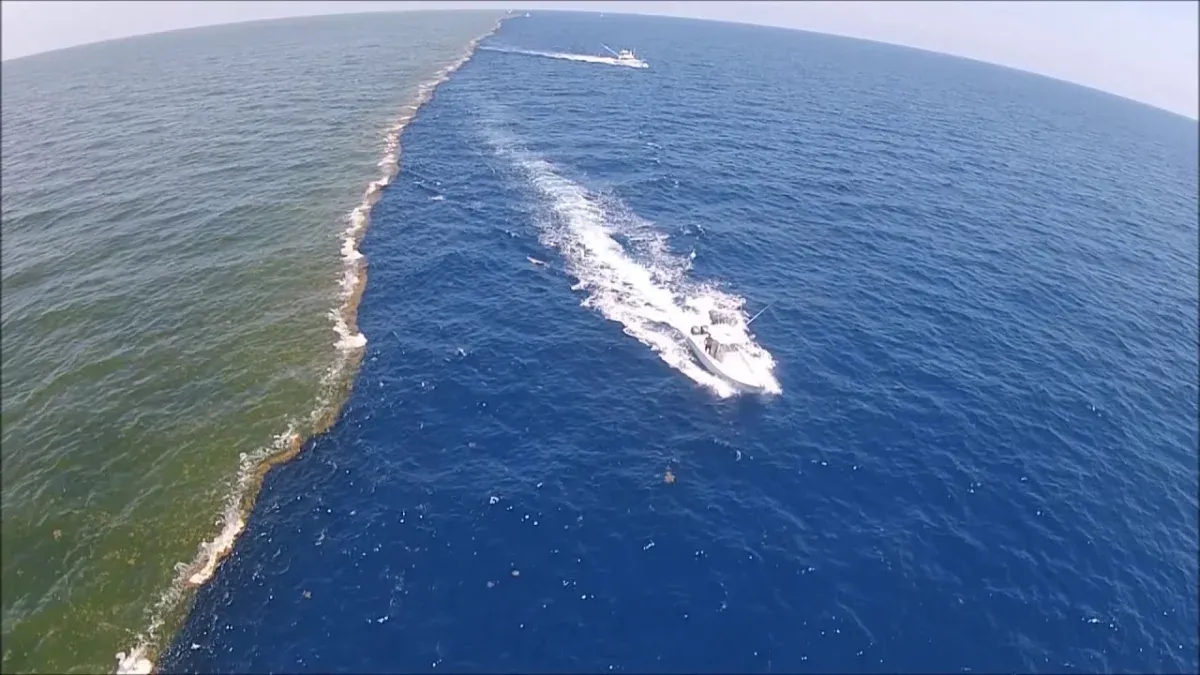A new study recently revealed the important role that the Atlantic-Arctic water mixing plays in sustaining the Atlantic Meridional Overturning Circulation (AMOC), a critical component of the Earth’s climate system. This study, led by researchers from the University of Southampton, the Indian Institute of Technology Bhubaneswar, the National Oceanography Centre, and Stockholm University, delves into the complex dynamics of ocean circulation, revealing how these processes play a role in regulating global climate patterns. The study, published in Nature Communications, provides new insights into the importance of water mixing in the North Atlantic and its consequences for climate change.
Understanding the Atlantic Meridional Overturning Circulation (AMOC)
The AMOC is referred to at times as a massive oceanic conveyor belt that plays an important role in transferring heat around the earth. It transports warm water from the tropics north, while cold, dense water travels south, particularly in the Atlantic Ocean. This circulation pattern is critical for preserving comparatively mild weather in countries such as Northern Europe, including the United Kingdom, which would otherwise experience much colder conditions comparable to other areas of the same latitude.
The AMOC’s operation is dependent on the interplay of warm, salty water from the Atlantic with cooler, fresher water from the Arctic. As warm water moves north, it progressively loses heat to the atmosphere, growing denser and plunging to tremendous depths. This sinking process produces the deep, cold, and dense water that makes up the bottom limb of the AMOC. However, the current study demonstrates that the dynamics of this process are far more complex than previously thought.
New Views: The Role of Atlantic-Arctic Water Mixing
The researchers examined ocean data from 1979 to 2021, concentrating on how the Atlantic-Arctic water mixing waves influence the AMOC. Their findings call into question previous ideas that focused on heat loss in specific locations as the primary driver of the AMOC. Instead, the study shows that mixing these two water masses is critical for maintaining circulation.
According to Dr. Dipanjan Dey, the study’s primary author and postdoctoral researcher at the University of Southampton, the lower limb of the AMOC is made up of roughly 72% Atlantic waters and 28% Arctic seas. The interaction between these water masses makes this composition significant.
Atlantic-Arctic Water Mixing: A Key to AMO C’s Strength
According to the study, when warm Atlantic water reaches cooler portions of the North Atlantic, it cools and sinks. While some of this dense water immediately returns southward, much of it continues northward, encountering colder, fresher Arctic seas in areas such as the Denmark Strait, which connects Iceland and Greenland. Mixing these water masses increases their density, making them more likely to sink and contributing to the AMOC’s southerly flow.
This mixing process accounts for approximately 33% of the transition of warm, salty water into colder, denser water, with the remaining 67% due to interactions between the ocean and the atmosphere. The researchers emphasize that this mixing is critical to sustaining the intensity of the AMOC, which drives global climate patterns.
Implications for Climate Change: A Weak AMOC and Its Consequences
The study’s findings have important implications for our knowledge of climate change and its possible effects on global ocean circulation. Climate models suggest that when the earth warms owing to human-caused climate change, the AMOC may slow down. A weaker AMOC, comparable to the one that prevailed during the previous Ice Age, would have far-reaching effects on world climate.
Professor Robert Marsh, a coauthor of the study from the University of Southampton, explains that when the ocean surface warms and becomes fresher, the accompanying rise in stratification—or layering of water—impedes the critical mixing of Atlantic and Arctic waters. This lower mixing weakens the AMOC by reducing the density and depth of its southerly flow, potentially slowing the circulation overall.
Potential for Abrupt and Irreversible Climate Changes
A slowdown in the AMOC might cause profound and potentially irreversible changes in the Earth’s climate. Northern Europe, for example, could see much colder temperatures, while sea levels along the United States’ eastern coast could increase significantly. These changes would have far-reaching consequences for ecosystems, agriculture, and human cultures.
Furthermore, a lower AMOC may shorten the period carbon dioxide (CO2) remains in the ocean before being released back into the atmosphere. This could hasten climate change by limiting the ocean’s ability to operate as a carbon sink. The study stresses the importance of understanding the intricate interplay between ocean circulation and temperature in projecting future climate scenarios and establishing effective mitigation methods for the effects of global warming.
Need for Accurate Climate Models:
The study’s findings highlight the significance of good climate models that can accurately depict the mechanisms involved in the mixing of Atlantic and Arctic waters. These models are critical for forecasting how the AMOC and other aspects of global ocean circulation will react to continuing climate change.
Dr. Dey points out that the study emphasizes the complexities of ocean-atmosphere interactions, as well as the urgent need to address global warming. “Our study emphasizes the need for climate models to accurately capture these water mixing processes to better predict future climate scenarios,” according to him. “We must act now to avoid crossing potential tipping points where the AMOC could slow down significantly or even collapse.”
Conclusion:
The study’s findings about the vital role of Atlantic-Arctic water mixing in supporting the AMOC shed light on the delicate balance that keeps the Earth’s climate system functioning. As climate change continues to disrupt this equilibrium, the possibility of a weaker or collapsed AMOC grows more likely, with potentially disastrous consequences for global climate patterns.

